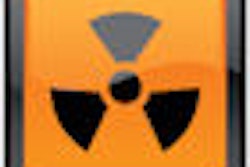Monday, November 30 | 10:40 a.m.-10:50 a.m. | SSC02-02 | Room S503AB
Global chest CT conversion factors (e.g., 14 μSv/mGy-cm or 17 μSv/mGy-cm), which are often used to calculate effective dose at cardiac CT, do not account for the variability of dose distribution with the procedure, according to radiation physicist Walter Huda, Ph.D., from the Medical University of South Carolina in Charleston.The investigators used a phantom to estimate patient-size-specific effective doses at cardiac CT using computed tomography dose index (CTDI) data provided by current commercial scanners. They used a spreadsheet to calculate effective doses for a 70-kg patient and the corresponding dose-length product (DLP) for x-ray tube voltages ranging from 80 kV to 140 kV on 16- and 64-detector-row scanners.
There was a fourfold variation in the E/DLP conversion factor between the most sensitive region in the chest near the breast (~28 μSv/mGy-cm) and the least sensitive region at the top of the scan field (~7 μSv/mGy-cm), Huda told AuntMinnie.com
"Based on our method of calculating patient- and examination-specific effective doses at cardiac CT using DLP data, a conversion factor of approximately 19 μSv/mGy-cm appears more appropriate if effective dose at cardiac CT is to be estimated," he said.
DLP may be a more objective and unifying measure for radiation dose at cardiac CT, "rather than the use of various chest CT conversion factors to calculate effective doses, which are hard to compare," Huda said.




















